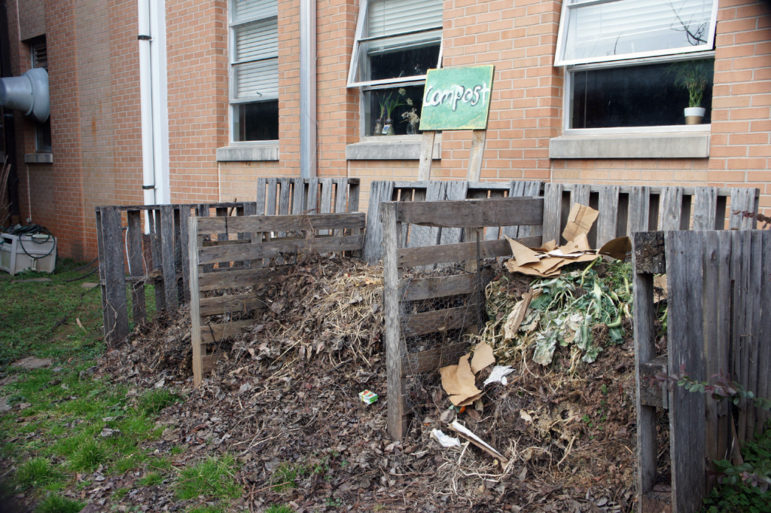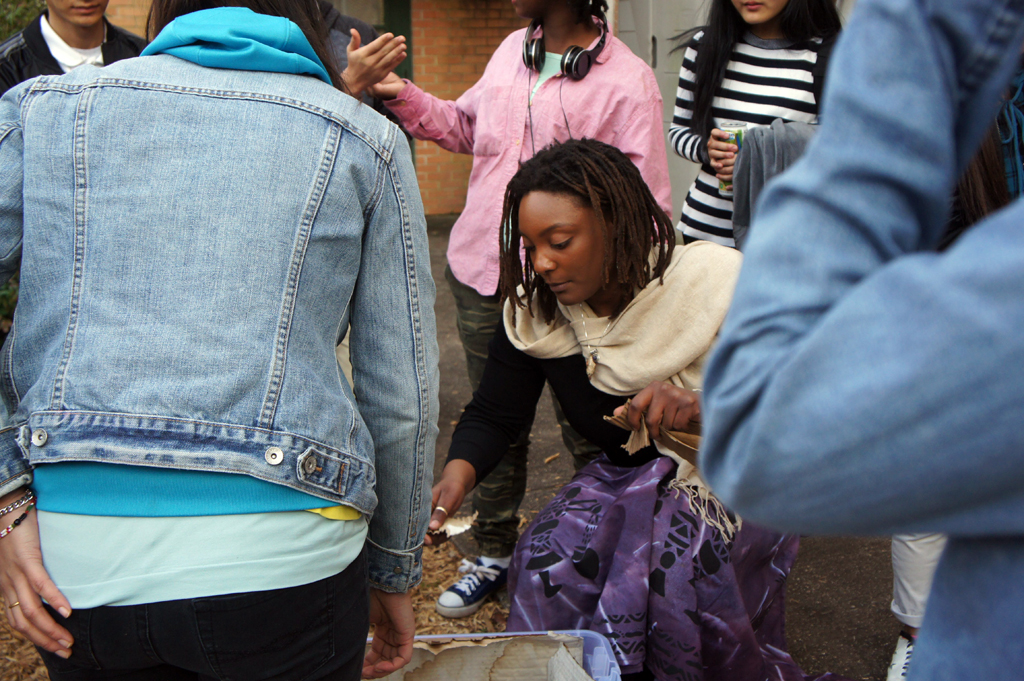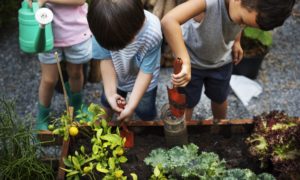ATLANTA — Zashe Cockett-Demings pulled out a small box of worms. She stood in front of 20 students in the outdoor courtyard of Clarkston High School near Atlanta.
Raised planting beds were scattered around the courtyard, filled with rosemary, oregano and other herbs. Cabbages and onions poked up above the dirt near a sundial.
“We’re going to make a worm bed,” she told the students, who laughed and pretended disgust, but were nevertheless interested.
“Worms are really important to having healthy soil,” she explained. They make channels in the dirt, allow water to flow through and fertilize the soil.
Cockett-Demings is a FoodCorps service member. She leads projects in the school Garden Club and teaches kids about gardening and food.
She and the students lined a large plastic container with cardboard, placed potting soil in it and added the worms. They’ll monitor the worm bed, add food scraps to it and watch the worms turn it into compost, which can be used in the garden.
That afternoon, the students also planted snow peas and chopped up ingredients to make hummus, which they then sampled.
FoodCorps has 225 service members working in schools and community organizations
in 17 states and the District of Columbia. It’s part of AmeriCorps, the national service network in which members spend up to a year volunteering.
“We teach kids how food is grown, prepared and delivered,” said Katrina Moore, FoodCorps content manager. “There’s definitely a big knowledge gap” about where food comes from.
FoodCorps teaches nutrition, trying to reduce obesity and help kids develop preferences for healthy food.
Many schools have compost stations, and kids can see the whole food cycle, Moore said.

Compost bins in the Clarkston High School courtyard.
They can grow food in school gardens and then eat it in the cafeteria.
“It’s really about empowerment,” she said, and showing kids how to do it yourself.
Students in the Garden Club come from Burma, Thailand, Afghanistan and other nations.
Cockett-Demings learns from them also. An 11th-grader from Thailand, Dohmoo, explained how hibiscus leaves are used to flavor food. “In our culture we use it to cook with chicken and fish,” he said.
Moore pointed out that one-third of the nation’s kids are on track to develop diabetes, according to the Centers for Disease Control and Prevention. Among kids of color, the statistic is about 50 percent.
Ninety-three percent of children do not eat enough vegetables to meet daily recommendations, and 60 percent do not eat enough fruit, according to the CDC.
Nutrition education done in a hands-on way does develop more preference for healthy food, Moore said. “If kids grow it and cook it, they are more likely to taste it. If they taste it, they are more likely to like it,” she said.
FoodCorps identifies school sites based on the percentage of kids receiving free or reduced-price lunches. FoodCorps service members work with kids both during the school day and after school. They connect schools and local farms, taking kids on field trips to farms and finding ways local produce can be used in the cafeterias.
Members serve in schools, school districts, nonprofit organizations and government agencies.
Cockett-Demings works at Clarkston High under the auspices of the International Rescue Committee, an Atlanta-based agency that resettles refugees. Clarkston is a center of refugee resettlement; the high school has students from more than 50 countries.































